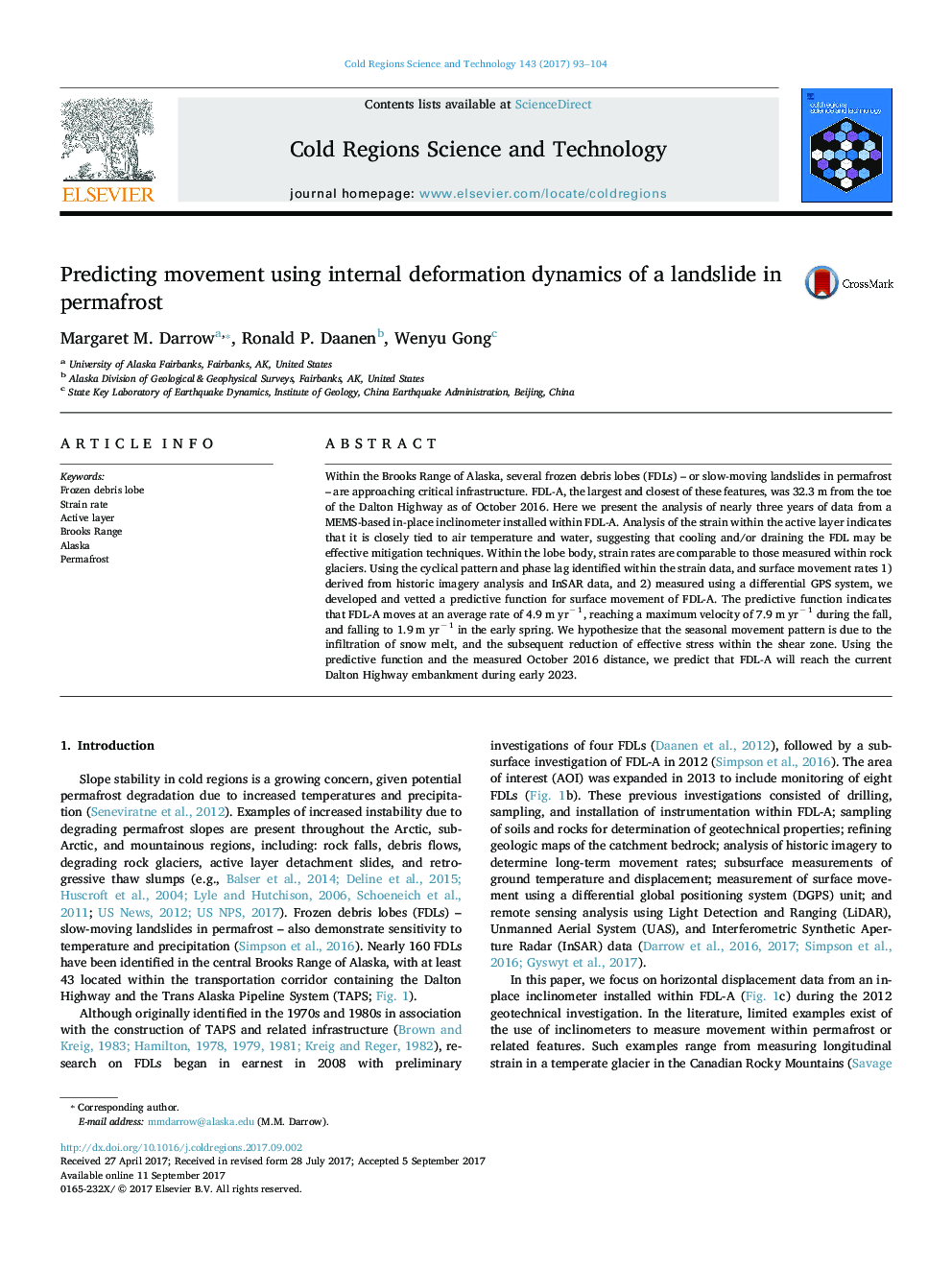| کد مقاله | کد نشریه | سال انتشار | مقاله انگلیسی | نسخه تمام متن |
|---|---|---|---|---|
| 5779383 | 1634421 | 2017 | 12 صفحه PDF | دانلود رایگان |
- Presents strain rates derived from an in-place inclinometer for frozen debris lobes, slow-moving landslides in permafrost
- Presents a predictive function for the movement of FDL-A, the largest FDL and closest to the Dalton Highway
- A seasonal movement pattern is present, which may be due to the infiltration of snow melt.
- Using the predictive function and measured October 2016 distance, FDL-A will reach the Dalton Highway in early 2023.
Within the Brooks Range of Alaska, several frozen debris lobes (FDLs) - or slow-moving landslides in permafrost - are approaching critical infrastructure. FDL-A, the largest and closest of these features, was 32.3 m from the toe of the Dalton Highway as of October 2016. Here we present the analysis of nearly three years of data from a MEMS-based in-place inclinometer installed within FDL-A. Analysis of the strain within the active layer indicates that it is closely tied to air temperature and water, suggesting that cooling and/or draining the FDL may be effective mitigation techniques. Within the lobe body, strain rates are comparable to those measured within rock glaciers. Using the cyclical pattern and phase lag identified within the strain data, and surface movement rates 1) derived from historic imagery analysis and InSAR data, and 2) measured using a differential GPS system, we developed and vetted a predictive function for surface movement of FDL-A. The predictive function indicates that FDL-A moves at an average rate of 4.9 m yrâ 1, reaching a maximum velocity of 7.9 m yrâ 1 during the fall, and falling to 1.9 m yrâ 1 in the early spring. We hypothesize that the seasonal movement pattern is due to the infiltration of snow melt, and the subsequent reduction of effective stress within the shear zone. Using the predictive function and the measured October 2016 distance, we predict that FDL-A will reach the current Dalton Highway embankment during early 2023.
Journal: Cold Regions Science and Technology - Volume 143, November 2017, Pages 93-104
